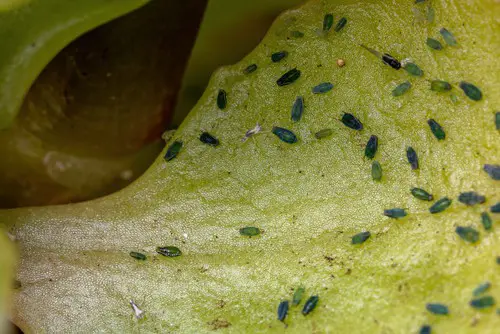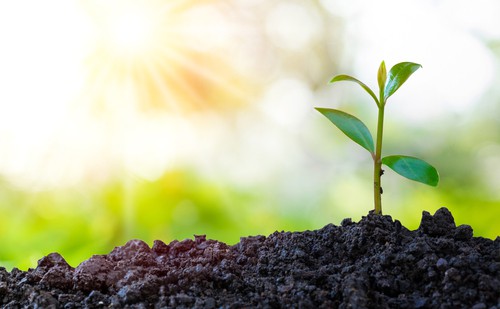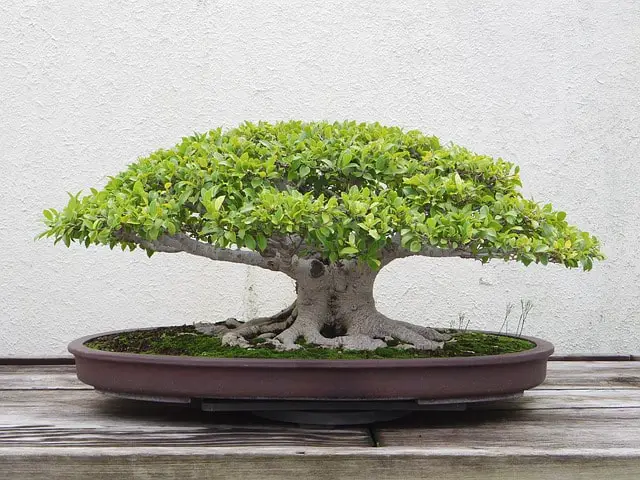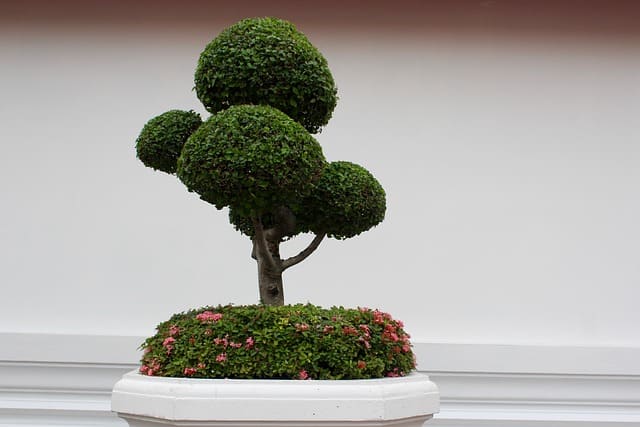Black spots on bonsai leaves can be a common problem that bonsai enthusiasts encounter. These black spots can be an indication of a variety of issues, including disease, pests, or environmental factors. It is important to understand the causes of black spots on bonsai leaves to properly diagnose and treat the issue.
Identifying the cause of black spots on bonsai leaves can be challenging, as there are many factors that can contribute to the problem.
Some of the most common causes of black spots on bonsai leaves include fungal infections, pests, over or underwatering, nutrient deficiencies, and environmental factors such as too much sun or not enough humidity. Properly diagnosing the issue is crucial to finding an effective treatment.
Treatment and prevention strategies for black spots on bonsai leaves will depend on the underlying cause of the problem. It is important to take a holistic approach to bonsai care, including proper watering, fertilizing, and pruning techniques.
Identifying potential issues early on and taking proactive measures can help prevent black spots from developing in the first place.
Key Takeaways
- Black spots on bonsai leaves can indicate a variety of issues, including disease, pests, or environmental factors.
- Properly diagnosing the underlying cause of black spots is crucial to finding an effective treatment.
- Taking a holistic approach to bonsai care, including proper watering, fertilizing, and pruning techniques, can help prevent black spots from developing.
You might also like these other related posts:
Understanding Black Spots on Bonsai Leaves

Black spots on bonsai leaves can be a sign of various issues that affect the health of the plant. These spots can appear on the top or bottom of the leaves and can be small or large.
One common cause of black spots on bonsai leaves is fungal disease. This can occur when the plant is exposed to high humidity or is over-watered. If the soil is too moist for too long, it can create an environment where fungi can thrive and cause black spots to appear on the leaves.
Another cause of black spots on bonsai leaves is a nutrient deficiency. If the plant is not receiving adequate nutrients, such as iron or magnesium, it can result in black spots on the leaves, as well as splotches of other colors.
It is important to provide the plant’s soil with adequate nutrition by fertilizing the soil every couple of weeks with a liquid solution during watering.
In some cases, black spots on bonsai leaves can be a sign of pest infestation. Common pests that can cause black spots include spider mites and scale insects. These pests can cause damage to the leaves and create black spots as a result.
To prevent black spots on bonsai leaves, it is important to maintain proper care for the plant. This includes ensuring that the soil is not too moist, providing adequate nutrition, and regularly inspecting the plant for signs of pests. If black spots do appear, it is important to identify the cause and take appropriate action to treat the issue.
Black Spots on Bonsai Leaves – 3 Common Problems
Bonsai trees are delicate and require proper care to thrive. One of the most common problems that bonsai growers face is the appearance of black spots on the leaves. Black spots on bonsai leaves can be caused by a variety of factors, including fungal diseases, pests and insects, and environmental factors.
1. Fungal Diseases
Fungal diseases are one of the most common causes of black spots on bonsai leaves. Fungi can infect bonsai trees through the soil, water, or air. Some common fungal diseases that can cause black spots on bonsai leaves include rust, sooty mold, and canker disease.
These diseases are often accompanied by other symptoms, such as leaf wilting or discoloration.
To treat fungal diseases, it is important to identify the specific type of fungus causing the problem. Fungicides can be used to treat many types of fungal diseases, but it is important to follow the instructions carefully to avoid damaging the tree.
2. Pests and Insects

Pests and insects can also cause black spots on bonsai leaves. Aphids, mealybugs, scale, and spider mites are all common pests that can infest bonsai trees. These pests can cause damage to the leaves, stems, and roots of the tree, which can lead to the development of black spots.
To control pests and insects, it is important to identify the specific type of pest causing the problem. Insecticides and other treatments can be used to eliminate pests, but it is important to follow the instructions carefully to avoid harming the tree.
3. Environmental Factors
Environmental factors can also cause black spots on bonsai leaves. Overwatering, underwatering, direct sunlight, and poor air circulation can all lead to the development of black spots. Humidity levels that are too high or too low can also contribute to the problem.
To prevent environmental factors from causing black spots on bonsai leaves, it is important to provide the tree with the proper care and conditions. Bonsai trees should be watered regularly but not overwatered, and they should be placed in a location that receives the appropriate amount of sunlight and has good air circulation.
Identifying and Diagnosing Black Spots
Bonsai trees are delicate and require special care to thrive. One of the most common issues that bonsai owners face is black spots on the leaves. These spots can be caused by a variety of factors, including fungal infections, pest infestations, and environmental factors.
Spotting Fungal Infections
Fungal infections are a common cause of black spots on bonsai leaves. These infections can be caused by a variety of fungi, including rust, sooty mold, and black soot. To identify a fungal infection, look for yellow or brown spots on the leaves that are surrounded by a ring of black or brown.
To treat a fungal infection, it is important to remove any infected leaves and treat the tree with a fungicide. It is also important to improve the tree’s growing conditions by providing proper light, water, and air circulation.
Recognizing Pest Infestations
Insects and other pests can also cause black spots on bonsai leaves. Common pests include scale, spider mites, mealybugs, and beetles. These pests can cause damage to the leaves and weaken the tree over time.
To identify a pest infestation, look for small insects on the leaves or stems of the tree. You may also notice webbing or a sticky substance on the leaves, which is a sign of spider mites or mealybugs.
To treat a pest infestation, it is important to remove any infected leaves and treat the tree with an insecticide. You can also use natural methods, such as ladybugs or beneficial nematodes, to control the pest population.
Assessing Environmental Impact

Environmental factors can also contribute to black spots on bonsai leaves. These factors can include insufficient light, poor air circulation, and overwatering. In some cases, viral infections or larvae infestations can also cause black spots on the leaves.
To assess the environmental impact on your bonsai tree, check the growing conditions and make any necessary adjustments. For example, if the tree is not getting enough light, move it to a brighter location. If the air circulation is poor, consider adding a fan to the room. If the tree is overwatered, reduce the amount of water you are giving it.
Treatment and Prevention Strategies
Bonsai trees are susceptible to various diseases and pests, which can cause black spots on the leaves. To keep your bonsai healthy and free from black spots, it is essential to adopt some preventive measures and treatment strategies.
Fungal Disease Treatment
Fungal diseases can cause black spots on the leaves of bonsai trees. To treat fungal diseases, a fungicide can be used. Fungicides are chemical compounds that kill or prevent the growth of fungi. They are available in garden centers and should be used as directed on the label. It is critical to repeat the spray as directed to ensure that the fungus is eradicated.
Pest Control Methods
Pests like spider mites, scale insects, and aphids can cause black spots on the leaves of bonsai trees. To control pests, various methods can be used, including the use of pesticides, insecticides, neem oil, vinegar, rubbing alcohol, and horticultural soap.
Pesticides and insecticides are chemical compounds that kill or prevent the growth of pests. They should be used as directed on the label and should not be overused to avoid harming the bonsai tree.
Neem oil is a natural pesticide that is effective in controlling pests. It is extracted from the neem tree and can be used to treat various pests, including spider mites, scale insects, and aphids. Neem oil should be diluted and sprayed on the leaves of the bonsai tree.
Vinegar and rubbing alcohol can also be used to control pests. A mixture of vinegar and water can be sprayed on the leaves of the bonsai tree to kill pests. Rubbing alcohol can be used to kill pests by wiping the leaves with a cotton ball soaked in rubbing alcohol.
Horticultural soap and insecticidal soaps are also effective in controlling pests. They are made from natural ingredients and are safe to use on bonsai trees. They work by suffocating the pests and can be used to treat various pests, including spider mites, scale insects, and aphids.
Environmental Adjustments

Environmental factors like direct sunlight, overwatering, and poor air circulation can cause black spots on the leaves of bonsai trees. To prevent black spots caused by environmental factors, it is essential to make some adjustments.
Bonsai trees should be placed in an area with indirect sunlight to prevent leaf burn. Overwatering should be avoided, and the bonsai tree should be watered only when the soil is dry. Good air circulation is also essential to prevent the growth of fungi and pests. The bonsai tree should be placed in an area with good air circulation.
Bonsai Care Tips to Prevent Black Spots
Bonsai trees require proper care and attention to thrive. Neglecting their needs can lead to various issues, including black spots on their leaves. Here are some tips to prevent black spots on your bonsai tree:
1. Watering
Overwatering or underwatering your bonsai tree can cause black spots on its leaves. Make sure to water your bonsai tree regularly and avoid letting the soil dry out completely.
On the other hand, avoid overwatering your bonsai tree, as this can lead to waterlogging and root rot. Ensure that the pot has proper drainage to prevent excess water from accumulating.
2. Soil
Using the right type of soil is crucial for the health of your bonsai tree. Akadama soil is a popular choice among bonsai enthusiasts because it has excellent drainage and aeration properties.
It also retains moisture well, which is essential for the growth of your bonsai tree. Make sure to repot your bonsai tree every two to three years to ensure that it has fresh soil and enough space for its roots to grow.
3. Light
Bonsai trees require adequate sunlight to grow and thrive. Make sure to place your bonsai tree in a location where it can receive enough sunlight. However, avoid exposing your bonsai tree to direct sunlight for extended periods, especially during the hot summer months. This can lead to leaf burn and other issues.
4. Pruning
Pruning is an essential part of bonsai tree care. Regular pruning helps to maintain the shape and size of your bonsai tree and promotes healthy growth. Make sure to use clean and sharp tools to avoid damaging your bonsai tree. Prune dead or damaged leaves and branches promptly to prevent the spread of diseases.
5. TLC
Bonsai trees require a lot of tender loving care. Regularly inspect your bonsai tree for signs of pests and diseases, such as ants, whiteflies, and black spot fungus. Treat any issues promptly to prevent them from spreading. Additionally, make sure to feed your bonsai tree with the right nutrients to promote healthy growth and prevent nutrient deficiencies.
Conclusion

There are various possible culprits for black spots or sections on a bonsai tree’s leaves. It is essential to identify the cause of the problem to determine the appropriate treatment.
Under-watering is one of the most common causes of black spots on bonsai leaves. It is essential to water the plant regularly and ensure that the soil is moist but not waterlogged. The bucket trick is an easy way to check if the plant is getting enough water.
Air circulation is also crucial for bonsai trees. Keeping the plant near an air conditioning vent or a heater can affect the humidity level, leading to black spots on the leaves. It is recommended to keep the plant in a well-ventilated area.
Old age is another possible cause of black spots on bonsai leaves. As the plant ages, the leaves may start to deteriorate and develop black spots. In such cases, it is best to remove the affected leaves and ensure that the plant receives proper care to prevent further damage.
Frequently Asked Questions
How do you treat black spots on Bonsai trees?
The treatment for black spots on Bonsai trees depends on the cause of the problem. If the spots are caused by leaf burn, move the plant away from direct sunlight right after misting it. If the spots are caused by fungal infection, remove the infected leaves and apply a fungicide.
Why does my bonsai tree have black spots on leaves?
There are several reasons why a bonsai tree may have black spots on its leaves. It could be caused by leaf burn, overwatering, poor air circulation, or fungal infection.
How do I get rid of bonsai fungus?
To get rid of bonsai fungus, remove the infected leaves and apply a fungicide. It is important to follow the instructions on the fungicide bottle and repeat the application as directed.
What causes black spots on bonsai leaves?
Black spots on bonsai leaves can be caused by several factors, including leaf burn, overwatering, poor air circulation, or fungal infection.
Can bonsai fungicide prevent black spots on leaves?
Yes, bonsai fungicide can prevent black spots on leaves caused by fungal infection. However, it is important to follow the instructions on the fungicide bottle and apply it regularly to prevent the infection from spreading.
Are tiny black specks on plant leaves a sign of bonsai fungal infection?
Tiny black specks on plant leaves can be a sign of bonsai fungal infection. These specks are usually caused by fungal spores and can spread quickly if not treated promptly. It is important to remove the infected leaves and apply a fungicide to prevent the infection from spreading.

Hey, I’m Lisa and I’ve been an avid gardener for over 30 years. I love writing, talking and living in the garden! Feel free to connect with me on my socials below


